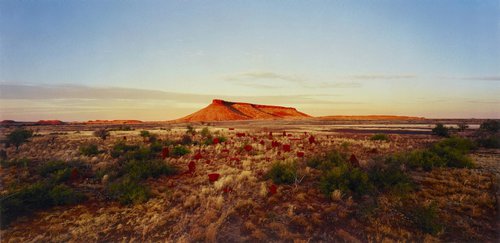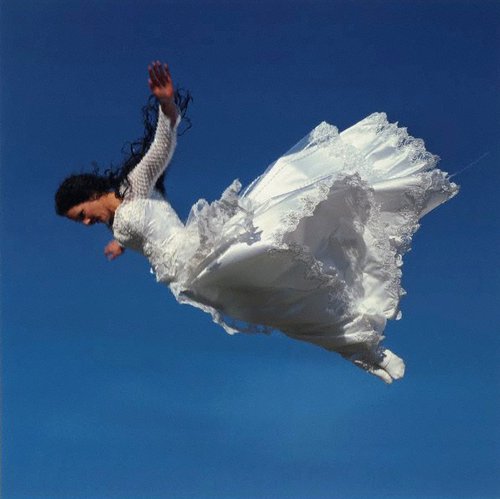-
Details
- Date
- 2003
- Media category
- Photograph
- Materials used
- type C photograph
- Edition
- 1/10
- Dimensions
- 109.4 x 227.3 cm image; 124.0 x 238.0 cm sheet; 127.3 x 244.3 x 6.3 cm frame
- Signature & date
Signed and dated l.l. verso mount (visible though backing board window), black ink "Rosemary Laing / ... / ... 2003".
- Credit
- Donated through the Australian Governments Cultural Gifts Program in memory of Henry E Boote 2015
- Location
- Not on display
- Accession number
- 182.2015
- Copyright
- © Rosemary Laing
- Artist information
-
Rosemary Laing
Works in the collection
- Share
-
-
About
Rosemary Laing’s artistic practice deals with time, transformation, and connection to place. Her work often acts as an intermediary between grand historical narratives and their legacy. Critically re-evaluating our relationship to land through the themes of past and present ownership, Laing’s photographs offer revisionary narratives.
Her 2003 series one dozen unnatural disasters in the Australian landscape, photographed around Balgo in the north-east of Western Australia – land belonging to the Wirrimanu Aboriginal community – directly speaks to these concerns. The conscious choice of location is crucial to the resolution of these works, as the site’s specific history as a Catholic Mission Station from 1933–75 provides an historical context for the exploration of time, transformation, narrative and legacy. Laing reconceives these histories within a contemporary framework.
The burning Ayer sequence, a subset within this series, navigates place and placelessness in relation to land and history. The mound of IKEA-style furniture represents domestic ideals and mass-produced modernity, ironically mirroring Uluru and incongruously placed within the expansive Australian outback. This ‘creation’ of an Australian national icon through symbols of disposability and mass production explores the manner in which we constitute national identities in the instance of significant European influence. However, by burning the furniture mound and recording its destruction, Laing creates a dichotomy that both references the violence associated with colonisation and creates a sense of purging or cleansing in the steps taken to address such injustices. The historical context of this work coincides with the 2002 return of the Anangu name of Uluru to what was previously known as ‘Ayers Rock’. Such ceremonious burning suggests hope for reconciliation and connectivity of people and place.
-
Exhibition history
Shown in 2 exhibitions
Face up: contemporary art from Australia, Hamburger Bahnhof, Berlin, Germany, 02 Oct 2003–04 Jan 2004
From Here, for Now, Art Gallery of New South Wales, Sydney, 05 Nov 2022–12 Feb 2023
-
Bibliography
Referenced in 2 publications
-
Abigail Solomon-Godeau, Rosemary Laing, Sydney, 2012, 49.
-
Vivienne Webb and Abigail Solomon-Godeau, The unquiet landscapes of Rosemary Laing, Sydney, 2005, 63.
-




